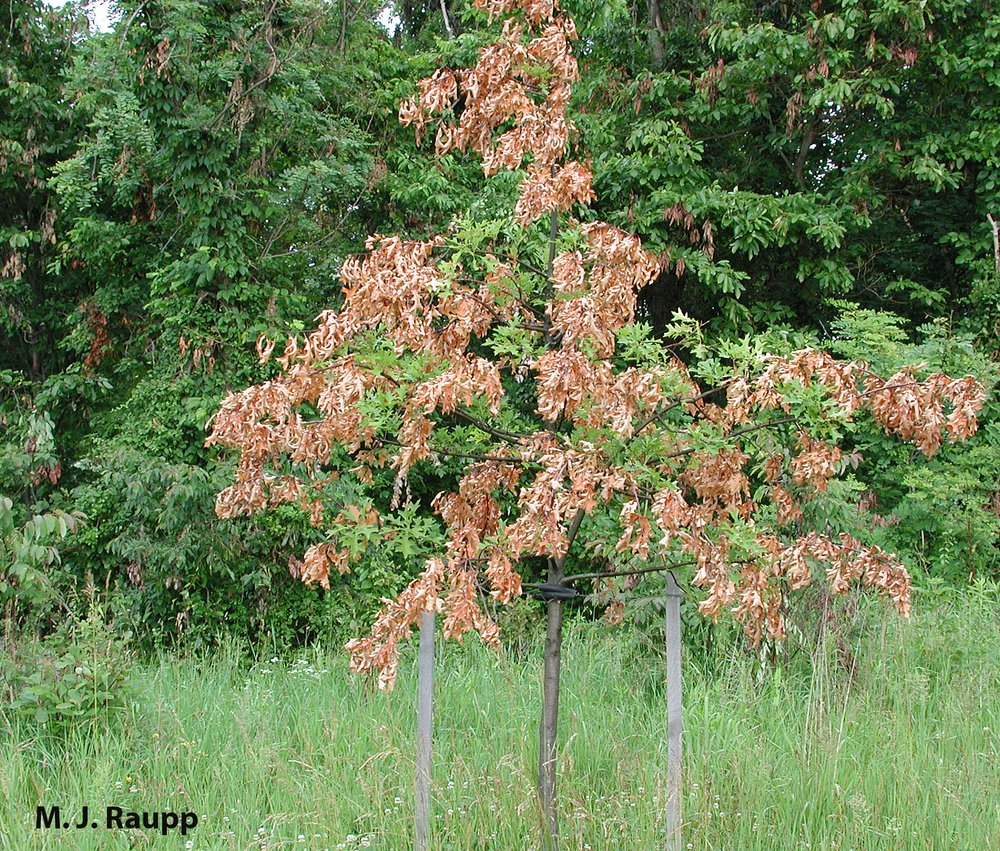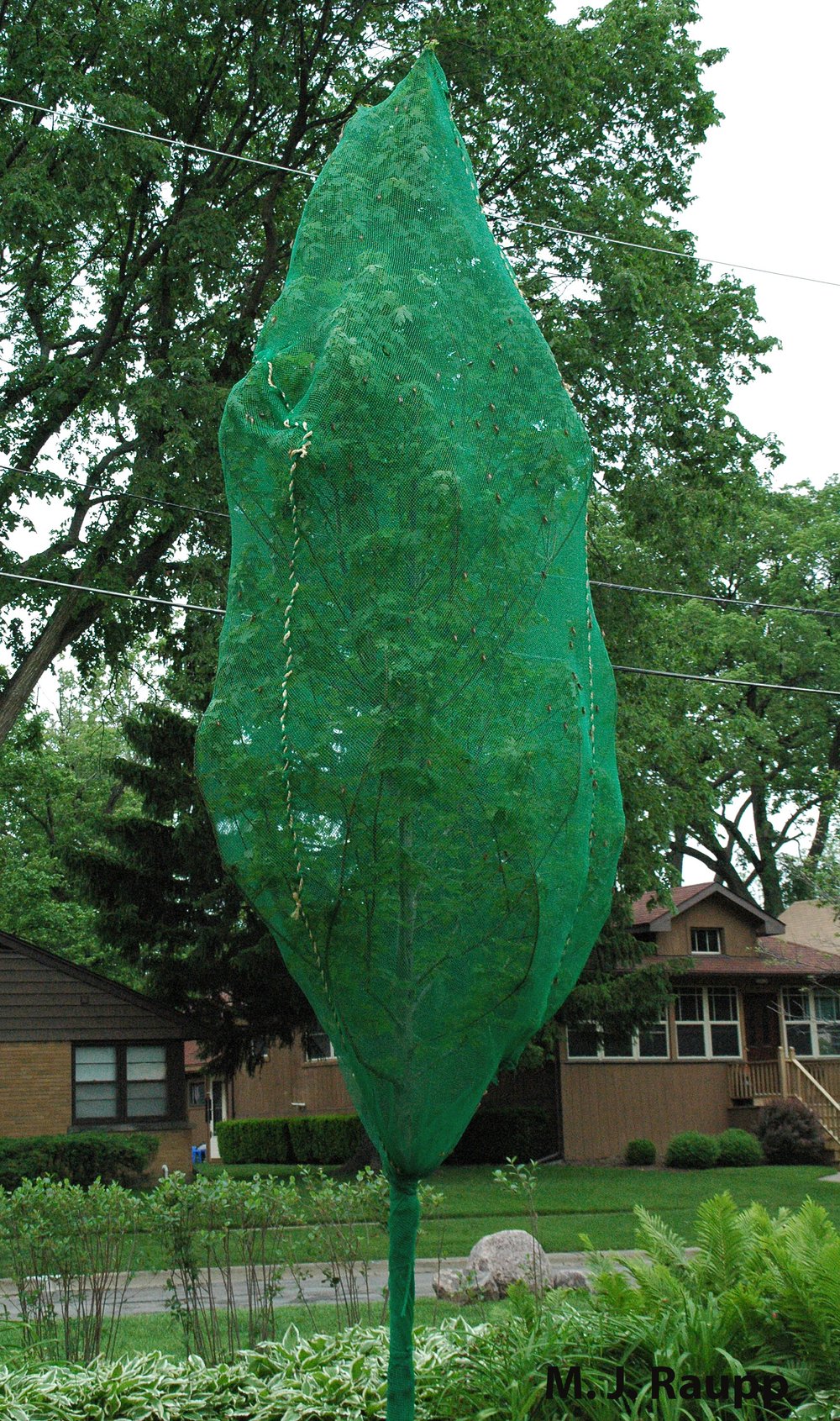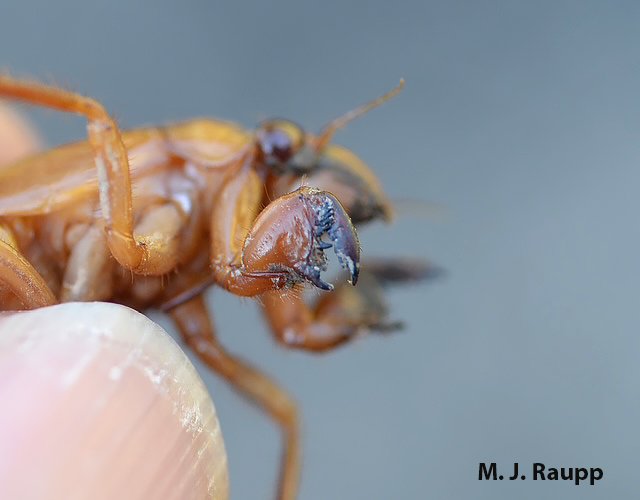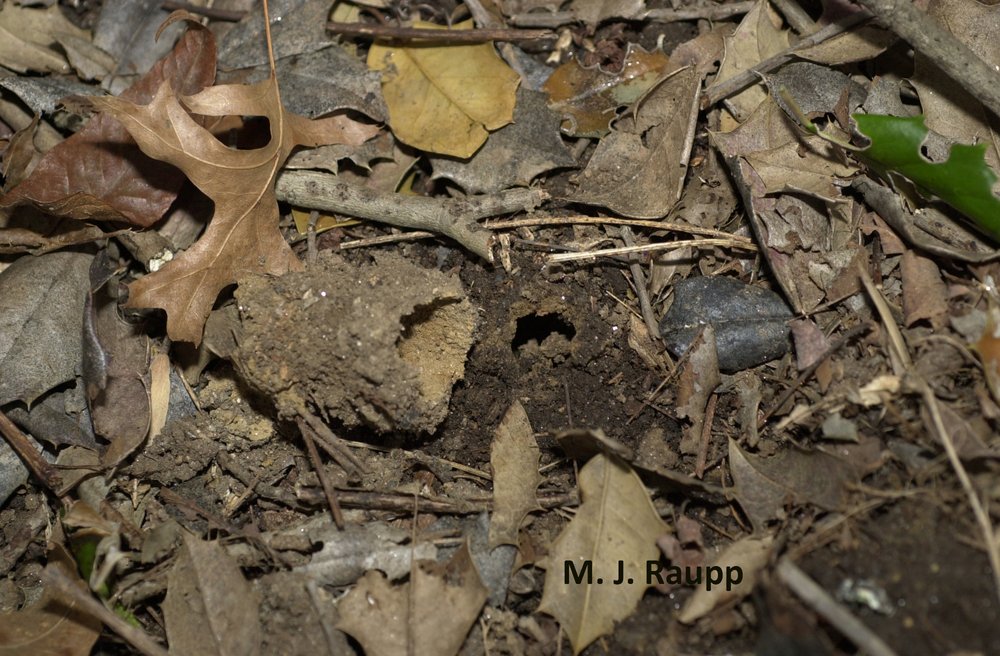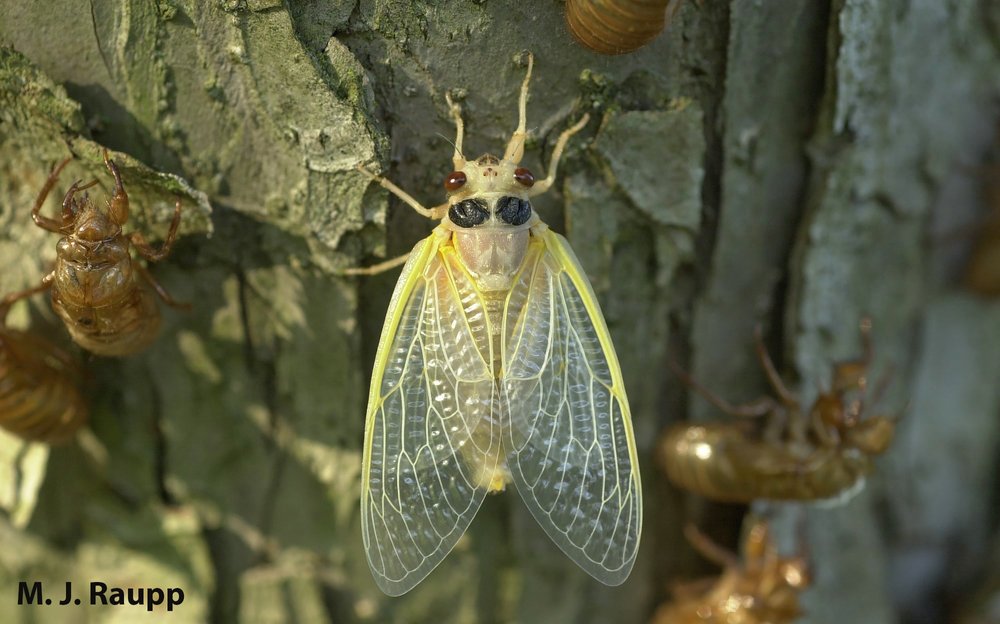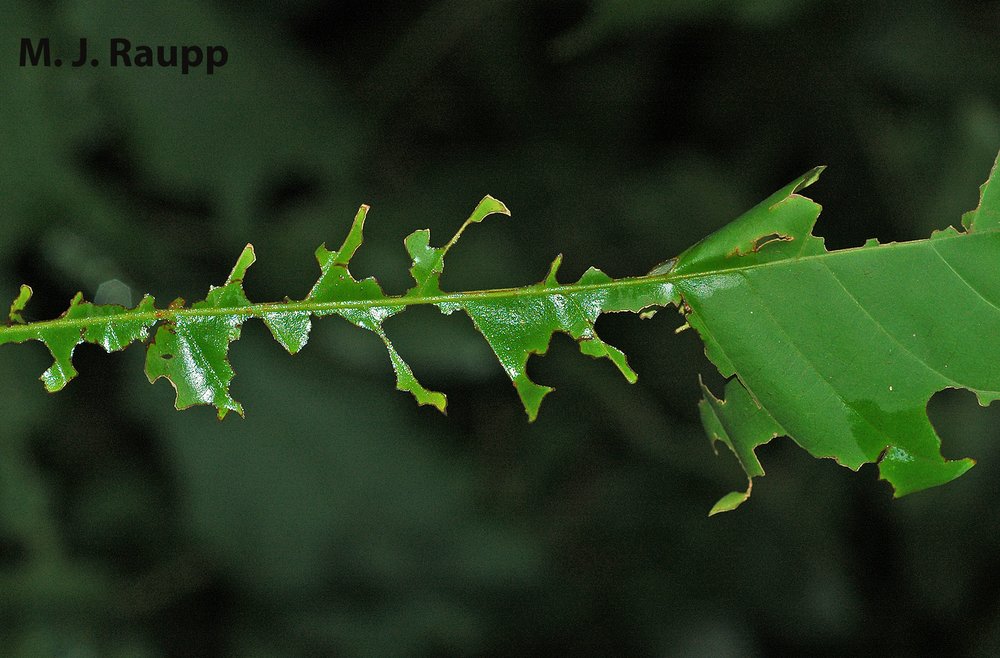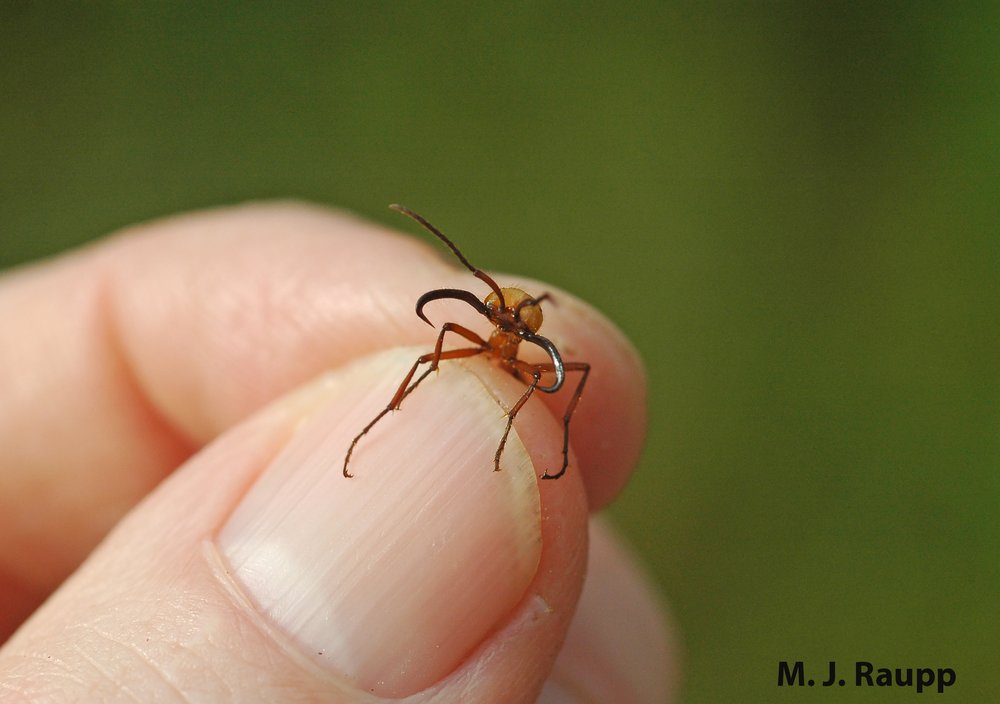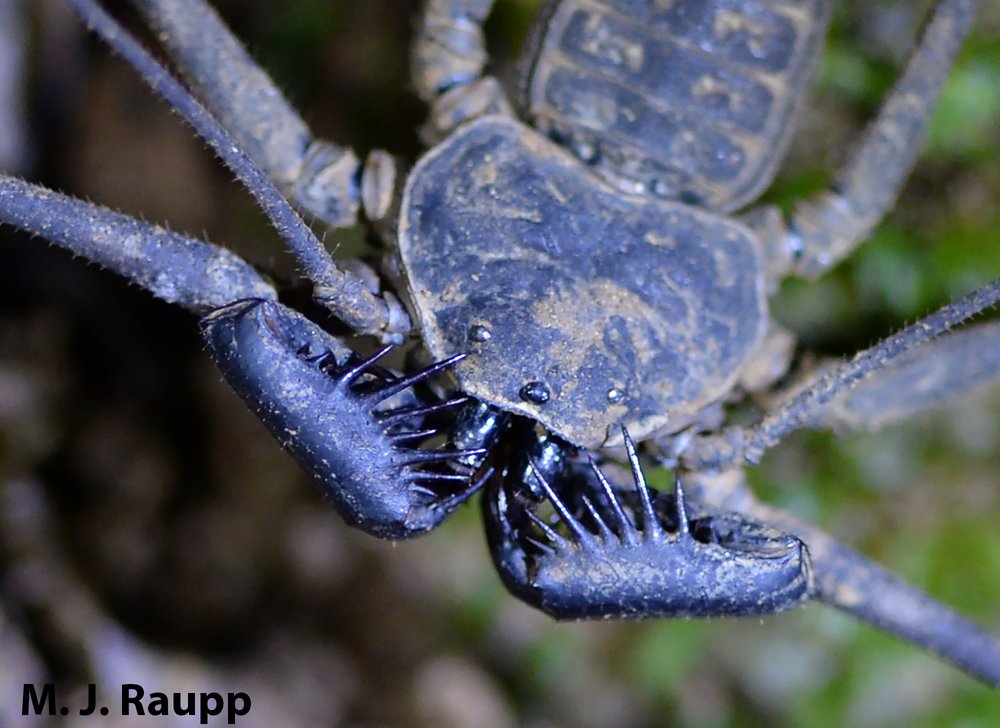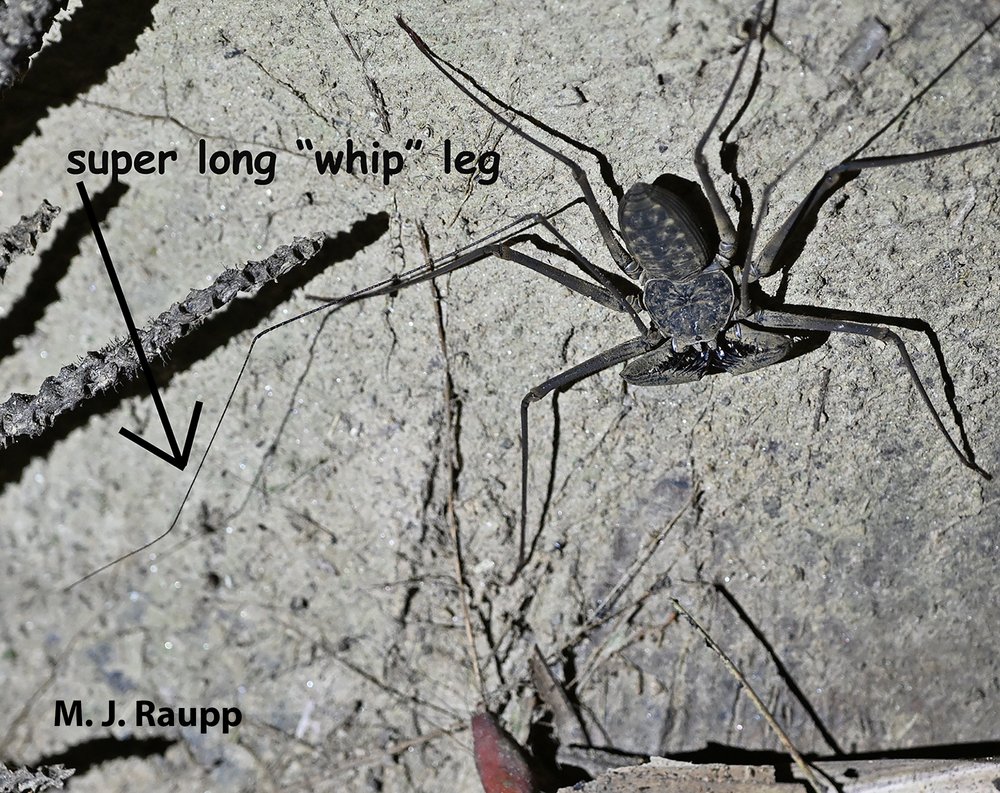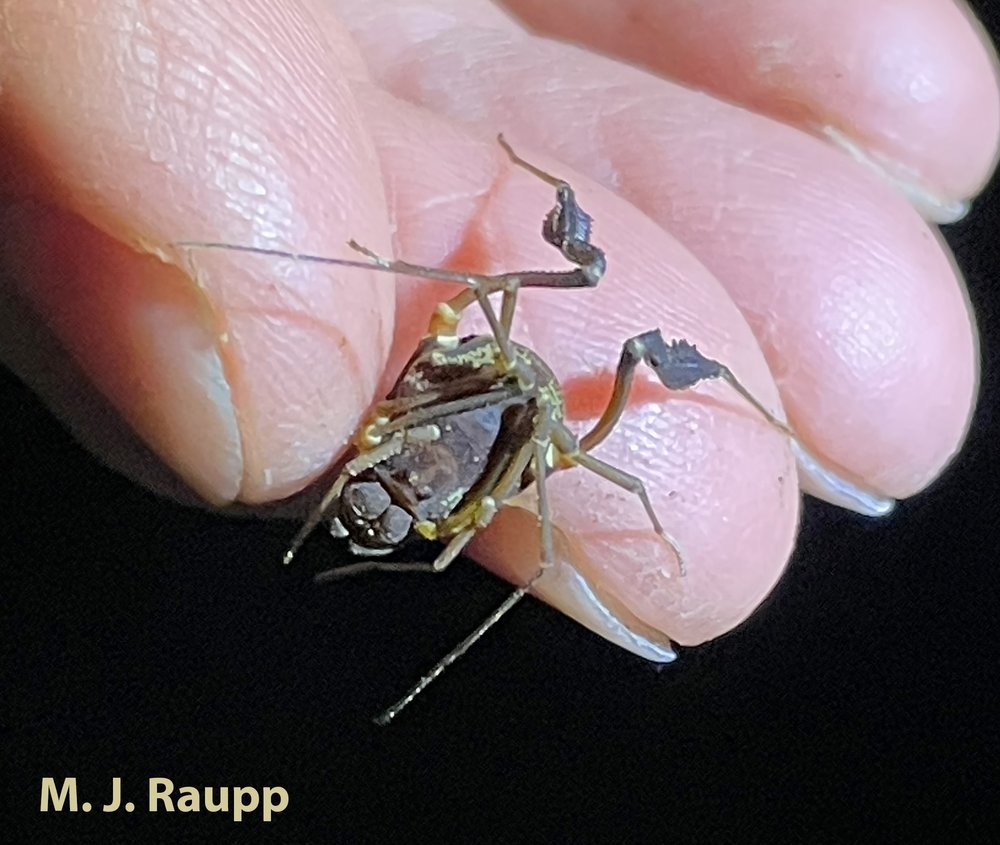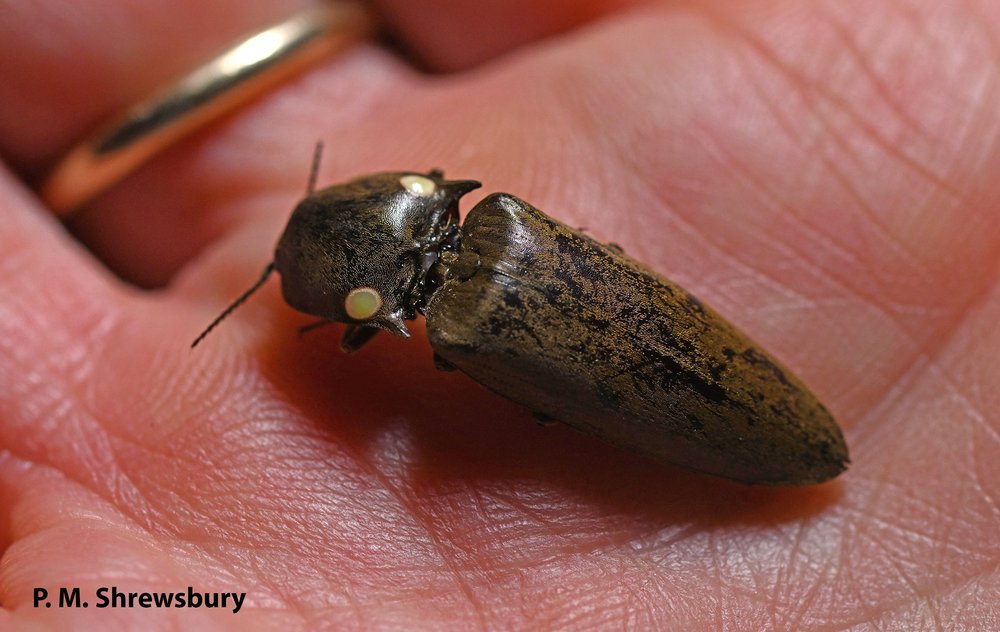When will periodical cicadas of Brood XIV make their appearance? Magicicada spp.

Almost-ready-to-emerge cicadas like this one lack dorsal black patches behind their red eyes.
In the past month, we explored the questions of how to know where periodical cicadas of Brood XIV might be seen, how to protect your trees from cicada damage and whether or not we should be worried about being bitten or stung by cicadas. Recently, one of the most frequently asked questions about periodical cicadas is, “when will cicadas appear?” Bug of the Week has been tracking the life history of periodical cicadas for almost two decades, so let’s look at some historical data and see what it reveals.
The “when” question will often be answered with, “when soil temperatures reach 64 degrees Fahrenheit.” This answer comes from brilliant work performed almost 60 years ago by J. E. Heath who discovered that cicadas emerged when “soil temperature at 20-cm depth in seven locations averaged 17.89 C … regardless of date.” This answer holds fairly well even to this day. However, it is not always possible to know just when the magical 64 degrees at 8 inches below ground hits. We explored this in a slightly different way by observing the emergence of straggling Brood X cicadas in the DMV in 2020. In 2020, several locations reported sightings of impressive numbers of Brood X cicadas that appeared one year early. These cicadas are known as “stragglers”. Stragglers are periodical cicadas that emerge years prior to or after the major portion of their brood mates. Often, 17-year cicada stragglers emerge four years prior to the emergence date of rest of the brood. In 2017, Maryland Brood X stragglers appeared on May 14 in Columbia and Gaithersburg. In addition to emerging four years early, sometimes stragglers emerge one year early and this is exactly what happened in 2020. Using data collected in 2020 from the brilliant Cicada Safari App, the very first cicada out of the ground in the DMV was seen on April 19, just south of Towson, Maryland. This one was an extreme outlier. Cicada emergence really picked up in the DMV on May 14, and by May 24, 25% of emerging cicadas were out of the ground. By May 28, 50% of cicadas had emerged, and just few days later, on May 31, 75% of all cicadas had emerged in DC, Maryland, and Northern Virginia. So, if 2025 is anything like 2020, or previous years for that matter, cicadas will be regularly seen as a trickle in some parts of their range in late April or early May with a tsunami hitting in the last two weeks of May and early June as these teenagers are up and out for the Cicadapalooza. Here in the DMV in 2020, the last cicada to emerge was reported in mid-June. Due to a normal life span of two to four weeks, don’t be surprised to see adult cicadas alive and well into the waning weeks of June, but, sadly, in most locations by the 4th of July, their moment in the sun will be all but finished and nothing but a fading memory.

This graph shows the range of cicada emergence dates in Maryland in 2020. These periodical cicadas, early risers of Brood X cicadas called stragglers, emerged one year in advance of their brood mates that appeared in 2021. Note an extremely early riser in April with the vast majority of cicadas emerging in late May and early June.
Unfortunately for most of us in the DMV, cicadas are likely to visit only Botetourt, Lee, Russell, Scott, Smyth, Tazewell, and Wise counties in western Virginia this year, with no hope of seeing them in DC and little hope of a visit in western Maryland. But for other states ranging from Georgia to Massachusetts Brood XIV is expected. Of course, the emergence in Georgia will begin weeks ahead of the emergence in Cape Cod. Back in the days of Brood X in 2021, Georgia reported adults in late April but in northern parts of Brood X’s range in northern Illinois, the adult show didn’t get underway until late May according to iNaturalist.
For seventeen years, nymphs of Brood XIV cicadas have been developing underground. While digging a hole in my yard years ago, I discovered a quartet of periodical cicadas about 14 inches underground. Notice their white eyes and uniformly tan bodies. Here we see a periodical cicada not quite ready to emerge resting at the top of its exit gallery beneath a cinder block. Just behind its red eyes, the dorsal surface of the cicada is uniformly tan. On the evening of its emergence, notice how the dorsal exoskeleton of the fully developed cicada nymph bears two distinct black patches just behind its eyes. I think these are really good clues to help figure out when cicadas are about to emerge in your area.

Note the black patches just behind the head of each cicada on the morning of their emergence.
On a more local level, how can we tell when the big jailbreak is close at hand? The images and video accompanying this episode provide some clues. For weeks prior to emergence, we witnessed almost-ready-to-go periodical cicadas peeking out from their galleries. In these images, notice that just behind the cicada’s brilliant vermillion eyes, the dorsal surface of the cicada’s exoskeleton is uniformly tan in color. On the evening or day of emergence, notice how the exoskeleton of the cicada bears two jet-black patches just behind its eyes. In more than a dozen emergences of periodical cicadas attended by the Bug Guy, this seems to be the clue that cicada emergence is very close at hand or underway. When you see these dark patches, the big show is about to begin. Get ready to enjoy!
Acknowledgements
Three cool articles, “Combining data from citizen scientists and weather stations to define emergence of periodical cicadas, Magicicada Davis spp. (Hemiptera: Cicadidae)” by M. J. Raupp, C. Sargent, N. Harding, and G. Kritsky, “The ecology, behavior, and evolution of periodical cicadas” by K. S. Williams and C. Simon, and “Thermal synchronization of emergence in periodical ‘17-year’ cicadas (Hemiptera, Cicadidae, Magicicada)” by J. E. Heath formed the foundation for this episode.
This post appeared first on Bug of the Week

